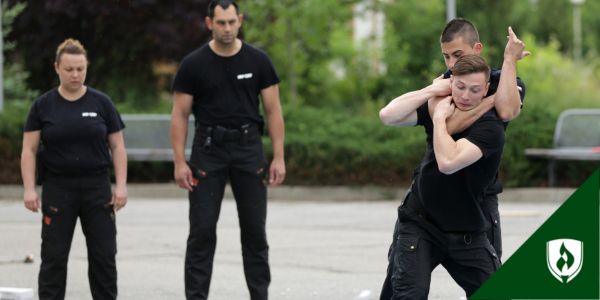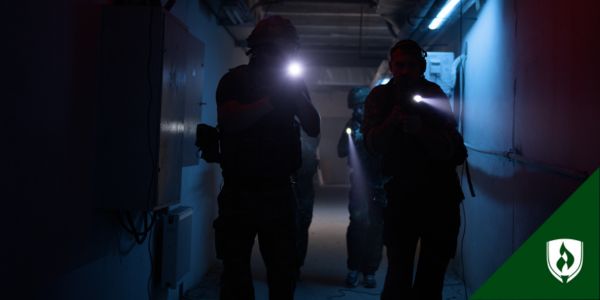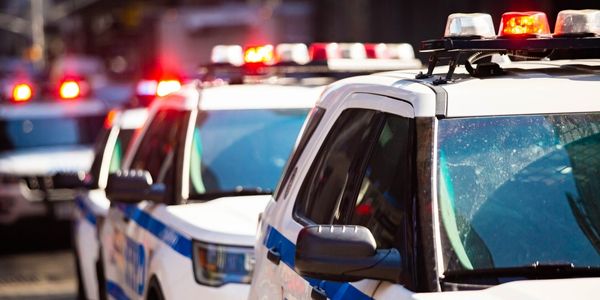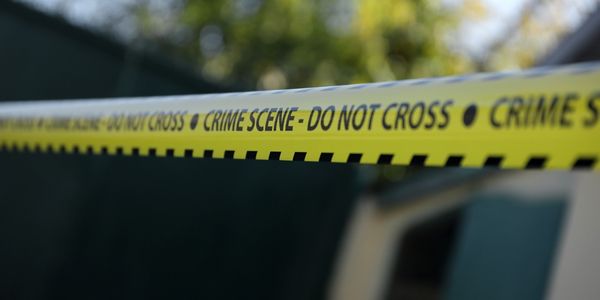How to Become a State Trooper: The Road to This Law Enforcement Career in Minnesota
By Brianna Flavin on 03/02/2020

For many people, the only encounter they’ve ever had with a state trooper revolves around their less-than-wise decision to ignore the posted speed limit. If you’ve seen those flashing red lights in your rearview mirror, your primary concern probably wasn’t focused on the intricacies of what state troopers do and what training the officer undertook—you were likely just hoping to drive away with a warning.
But now that you’re seriously considering a career in law enforcement, you might be wondering if you could become a state trooper yourself.
State troopers patrol state highways, enforce traffic laws and investigate crashes. Their daily activities could involve offering emergency assistance to people on the road as well as pursuing those who violate criminal laws (in cooperation with other police agencies). In general, they keep an eye on the wide swaths of highway running throughout the state.
“I really enjoy the freedom of choosing where I go for the day,” says Sgt. Preston Cruser, training academy coordinator of the Minnesota State Patrol. “One of the biggest things for state troopers is the potential that you might work a large geographical area by yourself.”
If you think this career could be the one for you, keep reading to see what it takes to become a state trooper.
4 Steps to becoming a state trooper
If you're intrigued by the thought of becoming a state trooper, it's time to start researching the process of pursuing this law enforcement position. Learn more about four important steps.
Step one: a law-enforcement degree
The standards around whether or not police officers need a college degree vary from state to state and can even vary between departments. In the state of Minnesota, officer hopefuls need an Associate’s degree or equivalent training to be eligible.
This typically means that a candidate would enroll in a two- or four-year degree program to gain an Associate’s or Bachelor’s degree with a Peace Officer Standings and Training (POST)-certified college. Other potential routes to eligibility include military service or other government-approved police training programs.
Completing these programs often involves time in the classroom as well as more hands-on skills. If your college program is POST-certified, you can rest assured that your coursework is checking the boxes of eligibility you will need to sit for the POST exam.
Step two: POST examination
Almost all states require a POST license for their police agencies. Licensure typically involves passing background checks, completing training hours, passing an exam—and then getting hired by a law-enforcement agency. In Minnesota, state trooper candidates must either have their POST license (meaning they have already been working in law enforcement) or they must be POST-eligible, meaning they’ve passed background checks, completed the required education and passed the POST exam.
For information on how to become eligible for licensure, visit the MN POST Board website or the POST website for your state.
If you do not meet the eligibility requirements for the POST examination, some states might have some alternative choices to look into. For example, Minnesota offers a Law Enforcement Training Opportunity (LETO) Program to give non-police applicants with a bachelor's degree in any subject the chance to become troopers.
“We will provide LETO Program applicants with the educational requirements necessary to take the Peace Officer Standards and Training (POST) exam, which is required to become a licensed peace officer,” the DPS writes. In this case, applicants would train, complete the POST-exam and then continue into the State Patrol Training Academy—all in one program.
Step three: Apply for the State Trooper Academy in your state
Applications for these academies are pretty rigorous since getting accepted is something like an early job offer. The training time is paid at 80 percent the base wage of a new State Trooper, and graduating the academy means you’ve made it into the ranks of the State Troopers.
According to the Minnesota Department of Public Safety (DPS), the selection process involves an application, online personality assessment, physical readiness test, verbal interviews in front of a panel, background investigation, medical evaluation, psychological evaluation, orientation and fingerprinting.
Cruser says the time at the academy can be challenging for those who have responsibilities at home. “The biggest hurdle in the process for me was being gone those weeks at the academy, since I had a two-year-old at home and a child on the way,” Cruser explains. He adds that this academy is also the essential difference between a State Trooper and other police agencies—it’s not a step you can skip.
Be sure to research the requirements for the trooper academy application in your state to make sure you are on the right track.
Step four: Complete the academy and start working as a state trooper
State trooper training academies exist to ensure that all troopers have the training they need for this particular branch of law enforcement. This training typically includes modified-stress scenarios to help trainees learn to handle emergency situations and process their thoughts under duress. Since state troopers are often the first to arrive at the scene of an emergency or a crime, they need a wide skill set including CPR, rescue, de-escalation, investigation and strategy.
Training often includes learning to operate a vehicle under high stress, how to rescue people from a submerged vehicle, high speed interception and a wide variety of weapons training.
Upon completion of the academy (and depending on your particular state’s process), you will be appointed to your state trooper position!
Ready to become a state trooper?
There are so many careers in law enforcement—all with unique duties and quirks. “To be a state trooper you need to be self-motivated, communicate well with the public and work with little supervision,” Sgt. Cruser says.
If the role of a state trooper appeals to you, the path forward is plain to see. Look ahead and find the next step for your career journey at the Rasmussen College Law Enforcement program page.
Professional Peace Officer Education (PPOE): This program meets standards established by the Minnesota Peace Officer Standards and Training Board (MN POST) for persons who seek employment in Minnesota as a peace officer. Graduates of this program may need to successfully complete additional academic coursework, training, practical/skills, and fitness standards before becoming eligible to sit for the MN Peace Officer Licensing Exam.
This program is not aligned to the standards of any professional licensing body other than the MN POST, and is not intended to satisfy professional licensure requirements of any professional licensing agency in any other state.




